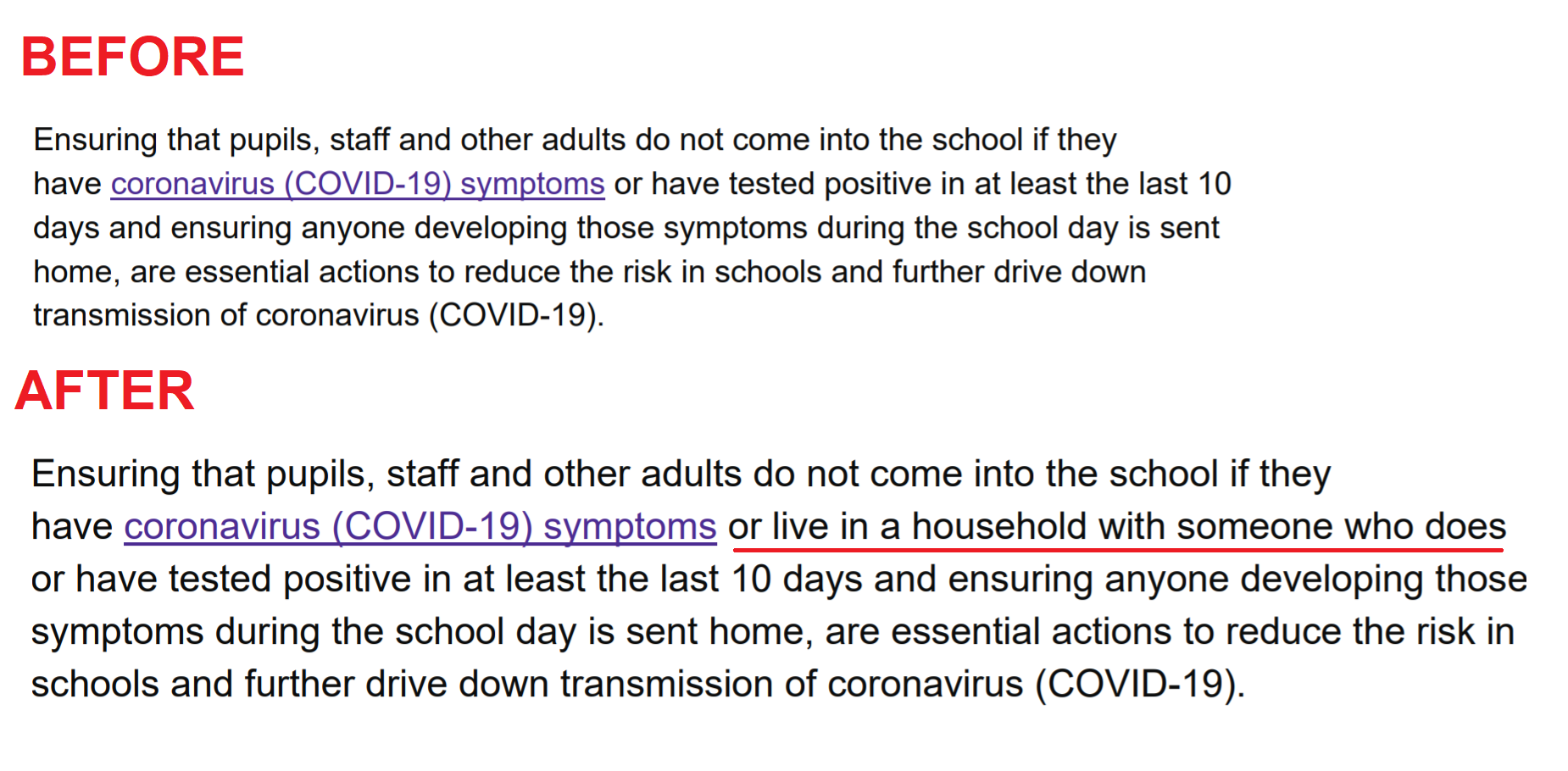An important Covid-19 guidance document for schools has been updated today to place more importance on ventilation and strengthen language around self-isolation.
Here’s what you need to know about the update to Restricting attendance during the national lockdown: schools document.
1. Ventilation moved up the priority list
The DfE has updated its system of controls within the guidance to make more prominent the need to ventilate occupied spaces.
The rule was previously number eight on the controls list, but has been moved up to number seven. The DfE said the list had been reordered to “make clear [the] importance of ventilation”.
The move comes amid growing concerns about airborne transmission of Covid-19.
2. Stay away if you have symptoms in your household
A section on the system of controls for schools relating to prevention has been amended.
Previously, the guidance stated that those with symptoms in their household should not attend school. But, confusingly, it then went on to talk only about those with the symptoms or positive cases themselves.
The updated guidance has been strengthened to make it clearer that pupils, staff and other adults who live with someone with Covid symptoms should also stay away.
“Ensuring that pupils, staff and other adults do not come into the school if they have coronavirus (Covid-19) symptoms or live in a household with someone who does or have tested positive in at least the last 10 days and ensuring anyone developing those symptoms during the school day is sent home, are essential actions to reduce the risk in schools and further drive down transmission of coronavirus (Covid-19).”

3. Household isolation should start from when symptoms show
Guidance in the document on self-isolation has also been strengthened to say that if anyone in school becomes unwell with Covid symptoms, the other members of their household including siblings “should self-isolate starting from the day the individual’s symptoms started (or the day their test was taken if they did not have symptoms, whether this was an LFD or PCR test), and the next 10 full days”.
The guidance previously just stated that those living with people with symptoms should self-isolate for 10 days “from the day after the individual tested positive”.
4. Close contact definition expanded
The guidance on what qualifies as a “close contact” has been updated.
The changes mean that anyone who lives in the same household as someone with Covid symptoms or who has tested positive is now considered a close contact.
The list of close contact situations has also been updated to include sexual contacts and to change the wording of others.
- face-to-face contact including being coughed on or having a face-to-face conversation within one metre
- been within one metre for one minute or longer without face-to-face contact
- sexual contacts
- been within 2 metres of someone for more than 15 minutes (either as a one-off contact, or added up together over one day)
- travelled in the same vehicle or a plane
Previous guidance defined close contacts as the following.
- direct close contacts – face to face contact with an infected individual for any length of time, within 1 metre, including being coughed on, a face to face conversation, or unprotected physical contact (skin-to-skin)
- proximity contacts – extended close contact (within 1 to 2 metres for more than 15 minutes) with an infected individual
- travelling in a small vehicle, like a car, with an infected person
5. Up to schools whether pupils struggling with remote ed are vulnerable
Language on pupils being classed as vulnerable if they have difficulty engaging in remote education has also been strengthened to emphasise that it’s up to the school or local authority.
As before, the guidance states that some pupils who struggle to engage with remote education “may be considered to be vulnerable children and therefore eligible to attend provision”.
However, it now states that it is “up to the child’s education provider or local authority to make this decision based on the needs of the child and their family, and a range of other factors, as set out in the guidance”.
The guidance previously stated that that it was a “decision based on local discretion and the needs of the child and their family, as well as a wide range of other factors”.
6. ‘Alternative’ interview approaches now recommended
The DfE is also now recommending that schools consider a “flexible approach” to new staff interviews, with “alternative options to face-to-face interviews offered where possible”.
The guidance previously only said that it “may be appropriate” for schools to consider a flexible approach.








Its a start but still they are not helping clinically vulnerable members of non teaching staff i would hope that pupils who are vulnerable are not attending but if they dont care of the staff except for teacher why would they care about students